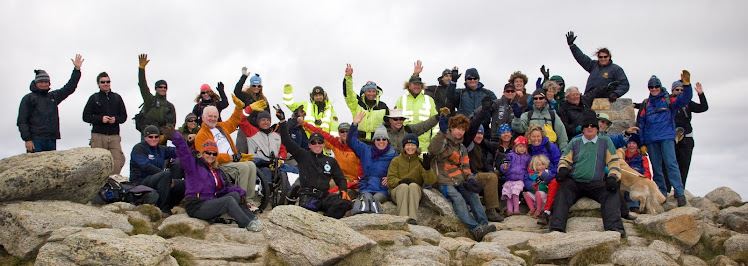After a short hiatus over June and July I am resuming the blog with recently published accessible tourism research on the accommodation sector. For people with specific access accommodation needs, locating accessible accommodation is the precursor to any trip. Hence, for destination management not to pay attention to this essential criteria suggests that they are not taking the accessible tourism market seriously. What became apparent over the last two decades of disability tourism research is that it is time to move beyond looking at the constraints facing people in the process of travel planning and the barriers faced whilst travelling to create a greater sophistication to our understanding and to provide solutions for their negotiation so people may travel to where they wish to.
Most research had identified the generalities of accessible accommodation requirements without having any specific empirical approach to understanding the needs from a mobility, vision, hearing and cognitive perspective. Each individual has their own access discourse where they value the relative importance of certain room components based on their individual access needs (e.g. many wheelchair users require a roll in shower & hand held shower hose Photo 1). While the overall building codes and access standards identify a myriad of components, the individual only understands at least complex technical documents from what they require in an accessible room (Australian Building Codes Board, 1990; Standards Australia, 1992, 2001, 2002). On the other hand, the accommodation manager manly as a understanding that their establishment has a “disabled room” that people with disability should be other stay in. Hence, once an individual hears that establishment has an accessible room they believe that it will meet their needs (Darcy, 2010).
Photo 1: Roll in shower hand held shower hose (Fiona Darcy 2010)
 |
1. technical measurements;
2. textual description;
3. a spatial understanding of the room; and
4. to complement the first three provisions, the information needed to be reinforced with digital photography that focused on the access features.
The results of this research have also been published in industry specific journals informing the research community as to the methodology used (Darcy, 2007b), the accommodation lodging sector to explain the power of detailed knowledge in marketing and promotion ,(Darcy, 2007a) and to inform access consultants and occupational therapists as to the specific technical requirements that were drawn on from the building codes and standards (Darcy, 2008; Darcy & Cameron, 2008b). The resulting accessible accommodation assessment template has been operationalised for regionally based destination management development (Darcy & Cameron, 2008a; Dickson & Darcy, 2010; Dickson & Hurrell, 2008). Lastly, the article provides researchers in other countries with a scale based tool for measurement, the Hotel Accessibility Scale, the requirement for the dimensions of access of people with disabilities accessible accommodation requirements.
The reference and abstract for the research is:
Darcy, S. (2010). Inherent complexity: Disability, accessible tourism and accommodation information preferences. Tourism Management, 31(6), 816-826.
Abstract
Studies have identified serious issues with the way that accessible accommodation information is documented, promoted and marketed. Yet, no research has investigated the criteria that people with disabilities determine as ‘important’ to selecting accommodation and their preference for presenting this information. This paper presents the results of an online questionnaire to determine the relative importance of room selection criteria through the development of a 55-item Hotel Accessibility Scale. Four information formats were then presented to ascertain the preferences of the respondents. The results suggest that while socio-demographic variables offered some insight into criteria selection, the most significant explanation for criteria selection and information preferences were through the dimensions of disability and level of support needs. The preferred format of accessible accommodation information provision was based on a combination of textual, floorplan and digital photography. The management implications suggest that detailed information provision using this format has benefits for accommodation stock yield and social sustainability.
References
Australian Building Codes Board. (1990). Building Code of Australia. Canberra: CCH Australia.
Darcy, S. (2007a). Disability Awareness - are you losing business? OurHotel - Magazine of the Australian Hotels Association, 2007(Summer), 42-45.
Darcy, S. (2007b, 11-14 February). A methodology for assessing class three accessible accommodation information provision. Paper presented at the Tourism - Past Achievements, Future Challenges, Manly Pacific Novotel, Manly - Sydney Australia.
Darcy, S. (2008, 29-31 October). Valuing Accessible Rooms: Understanding Accessible Tourism Accommodation Information Preferences. Paper presented at the CREATING INCLUSIVE COMMUNITIES - conference of the Association of Consultants in Access, Australia, Hyatt Regency, Adelaide.
Darcy, S. (2010). Inherent complexity: Disability, accessible tourism and accommodation information preferences. Tourism Management, 31(6), 816-826.
Darcy, S., & Cameron, B. (2008a). Accessible Accommodation Assessment Template [Software template]. Sydney: © University of Technology, Sydney and Easy Access Australia.
Darcy, S., & Cameron, B. (2008b). Accommodating Tourism: Hotel accommodation, accessible tourism and market principles - Evidence-based research. [Research note]. Independent Living: Official journal of Independent Living Centres Australia 24(4), 24-28.
Dickson, T., & Darcy, S. (2010). The Alpine Accessible Tourism Project and Disabled WinterSport Australia. In D. Buhalis, S. Darcy & I. Ambrose (Eds.), Accessible Tourism Practice: International Case Book (pp. 1-40). Bristol, UK: Channel View Publications (in press).
Dickson, T., & Hurrell, M. (Writers). (2008). Alpine Accessibility Tourism Toolkit [DVD]. In T. Dickson (Producer). Australia: Australian Tourism Development Program/Australian Federal Government Initiative.
Standards Australia. (1992). AS 1428.2 - Design for access and mobility - Enhanced and additional requirements - Buildings and facilities ([Rev. ] ed.). North Sydney, NSW: Standards Australia.
Standards Australia. (2001). AS 1428.1 Design for access and mobility - General requirements for access - New building work. Homebush, NSW: Standards Australia.
Standards Australia. (2002). AS/NZS 1428.4 - Design for access and mobility - Tactile indicators North Sydney, NSW: Standards Australia.









